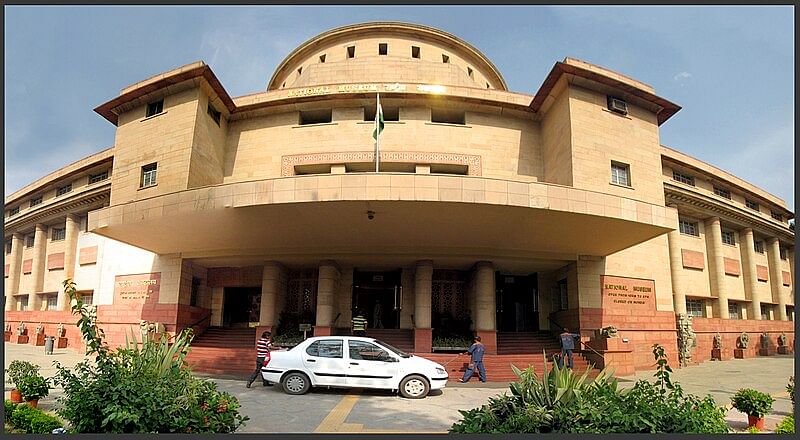
National Museum in Delhi.
Credit: Wikimedia Commons
The National Museum in Delhi, home to a collection of rich ancient artefacts, is likely to be vacated by the end of this year as part of the Central Vista redevelopment project, sources said on Thursday.
It is not clear whether the over 60-year-old building, one of the most iconic modern landmarks of the capital city, will be retained or razed after its objects and collections are shifted.
'As part of the Central Vista redevelopment project, the plan is to vacate the National Museum by the end of this year. Instructions have been given to search for a space where the collections could be safely and properly shifted,' an official source said.
The collections will eventually be housed in the proposed Yuge Yugeen Bharat National Museum which would be located in the North Block and South Block of the Raisina Hill complex.
However, till the new museum space is ready, the collections of the National Museum will have to be relocated somewhere else, the sources said.
If a new suitable space is not found, 'the museum may get shut for visitors and scholars' till an alternative space is found, they added.
Currently, only about 10 per cent of the objects are on display, and the remaining are in storage.
The foundation of the present building was laid by the country's first Prime Minister Jawaharlal Nehru on May 12, 1955.
The first phase of the National Museum building was formally inaugurated by the then Vice President Sarvepalli Radhakrishnan on December 18, 1960. The second phase was completed in 1989.
The 35,000-square metre museum located on Janpath presently holds approximately 2,00,000 objects of diverse nature, both Indian as well as foreign, and its holdings cover a time span of more than five thousand years of Indian cultural heritage.
The National Museum was initially looked after by the Director General of Archaeology until 1957, when the Ministry of Education, Government of India, declared it a separate institution and placed it under its own direct control.
At present, the National Museum is under the administrative control of the Ministry of Culture, according to its official website.
Prime Minister Narendra Modi on May 18 launched a virtual walkthrough of the upcoming Yuge Yugeen Bharat National Museum which will have eight thematic segments telling the story of India spanning over 5,000 years.
The new museum will cover an area of 1.17 lakh sq m with 950 rooms spread over a basement, ground and two more floors.
The two identical blocks on the Raisina Hill along with the Rashtrapati Bhavan (earlier Viceroy House), symbols of architectural grandeur and administrative power, were built as part of the 'New Delhi' imperial capital that was designed by Sir Edwin Lutyens and Sir Herbert Baker, between 1911-1931.
'Currently, various ministries are located in the North Block and South Block, and the common Central Secretariat is under construction where the IGNCA once stood. So, one cannot say what will be the exact timeline of shifting the collections eventually to the North Block and South Block as part of the upcoming museum there,' the source said.
The source added that locating a large space in Lutyens' Delhi where the collections of the National Museum can be temporarily housed will be a difficult task.
The redevelopment of the Central Vista - the nation's power corridor in Delhi - envisaged a triangular Parliament building next to the existing one, a common Central Secretariat for ministries and the revamping of the three-km-long Rajpath - from Rashtrapati Bhavan to India Gate.
The new Parliament building, a state-of-the-art structure, was inaugurated by Modi on May 28 and Parliament moved into the swanky new complex on September 19.
The Rajpath -- a ceremonial axis that runs from India Gate to Raisina Hill -- was in September last year renamed as Kartavya Path by the government, and the revamped Central Vista lawns were thrown open to the public.
The blueprint for establishing the National Museum in Delhi was prepared by the Maurice Gwyer Committee in May 1946, according to its website.
On August 15, 1949, the National Museum was inaugurated in the Rashtrapati Bhavan by C Rajagopalachari, the then Governor-General of India, before finding a home at Janpath.